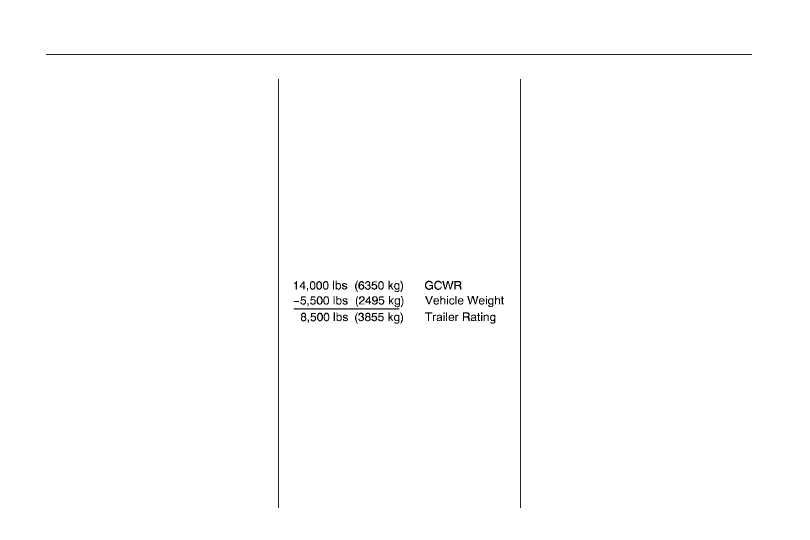Buick Enclave (2009 year). Manual - part 17

After loading the trailer, weigh the
trailer and then the tongue,
separately, to see if the weights are
proper. If they aren’t, adjustments
might be made by moving some
items around in the trailer.
Trailering may also be limited by the
vehicle’s ability to carry tongue
weight. Tongue weight cannot cause
the vehicle to exceed the GVWR
(Gross Vehicle Weight Rating) or the
RGAWR (Rear Gross Axle Weight
Rating). The effect of additional
weight may reduce the trailering
capacity more than the total of the
additional weight.
Consider the following example:
A vehicle model base weight is
5,500 lbs (2 495 kg); 2,800 lbs
(1 270 kg) at the front axle and
2,700 lbs (1 225 kg) at the rear axle.
It has a GVWR of 7,200 lbs
(3 266 kg), a RGAWR of 4,000 lbs
(1 814 kg) and a GCWR (Gross
Combination Weight Rating) of
14,000 lbs (6 350 kg). The trailer
rating should be:
Expect tongue weight to be at least
10 percent of trailer weight
(850 lbs (386 kg)) and because the
weight is applied well behind the
rear axle, the effect on the rear axle
is greater than just the weight
itself, as much as 1.5 times as
much. The weight at the rear axle
could be 850 lbs (386 kg) X
1.5 = 1,275 lbs (578 kg). Since the
rear axle already weighs 2,700 lbs
(1 225 kg), adding 1,275 lbs (578 kg)
brings the total to 3,975 lbs
(1 803 kg). This is very close to, but
within the limit for RGAWR as
well. The vehicle is set to trailer up
to 8,500 lbs (3 856 kg).
4-28
Driving Your Vehicle